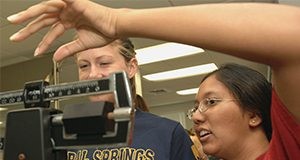Abstract
This EDIS document is the first in a series discussing how Extension can more efficiently encourage citizens to join the local food movement by effectively utilizing and leveraging opinion leaders. These articles look at the role opinion leaders, or individuals who have a large amount of influence within their respective social circles, can have on motivating their peers to join in purchasing local food. Written by Layne S. Marshall, Melissa R. Taylor, and Alexa J. Lamm, and published by the UF Department of Agricultural Education and Communication, August 2016.
AEC604/WC266: Opinion Leadership and the Perceived Health Benefits of Local Food (ufl.edu)
References
Hill, H. (2008). Food miles: Background and marketing. National Center for Appropriate Technology. Retrieved from https://attra.ncat.org/attra-pub/viewhtml.php?id=281
Hodges, A. W., & Stevens, T. J. (2013). Local food systems in Florida: Consumer characteristics and economic impacts. Food and Resource Economics Department, University of Florida. Retrieved from http://www.fred.ifas.ufl.edu/economic-impact-analysis/pdf/Florida-statewide-local-food-survey-2-6-13.pdf
Kaplan, J. (2010). Eat local: Does your food travel more than you do? National Resources Defense Council. Retrieved from http://www.nrdc.org/health/foodmiles/
Keller, E. B., & Berry, J. L. (2003). The influential: One American in ten tells the other nine how to vote, where to eat, and what to buy. New York, NY: Simon & Schuster.
Low, S. A., Adalja, A., Beaulieu, E., Key, N., Martinez, S., Melton, A., ... Jablonski, B. R. (2015). Trends in US local and regional food systems: A report to Congress. AP-068, United States Department of Agriculture, Economic Research Service. Retrieved from http://www.ers.usda.gov/media/1763057/ap068.pdf
Low, S. A. & Vogel, S. (2011). Direct and intermediated marketing of local foods in the United States. United States Department of Agriculture, Economic Research Report Number 128. Retrieved from http://www.ers.usda.gov/publications/err-economic-research-report/err128.aspx https://doi.org/10.2139/ssrn.2114361
Nisbet, M. C., & Kotcher, J. E. (2009). A two- step flow of influence: Opinion- leader campaigns on climate change. Science Communication, 30(3), 328-354. doi: 10.1177/1075547008328797 https://doi.org/10.1177/1075547008328797
Norwood, B. F., Oltenacu, P. A., Calvo- Lorenzo, M. S., & Landcaster, S. (2015). Agricultural and food controversies: What everyone needs to know. New York, NY: Oxford University Press. https://doi.org/10.1093/wentk/9780199368433.001.0001
Valente, T. W. & Pumpuang, P. (2007). Identifying opinion leaders to promote behavior change. Health & Behavior, 34(6), 881-896. doi: 10.1177/1090198106297855 https://doi.org/10.1177/1090198106297855
Rogers, E. M. (2003). The Diffusion of Innovations (5th ed.). New York, NY: Free Press.
Social Networking Use. (2015). [Graph illustration of percent of internet users]. Pew Research Center. Retrieved from http://www.pewresearch.org/data-trend/media-and-technology/social-networking-use/

